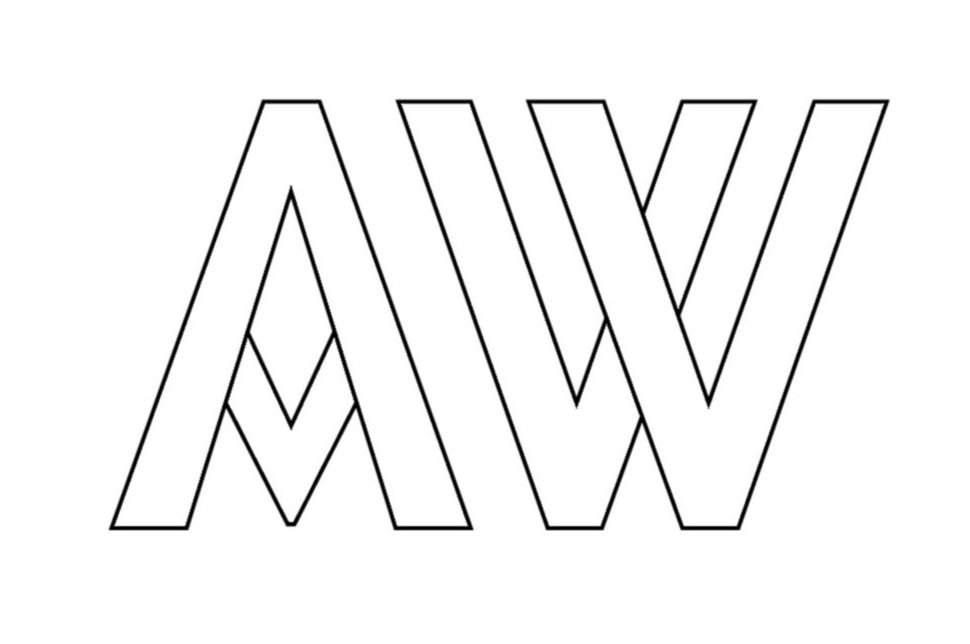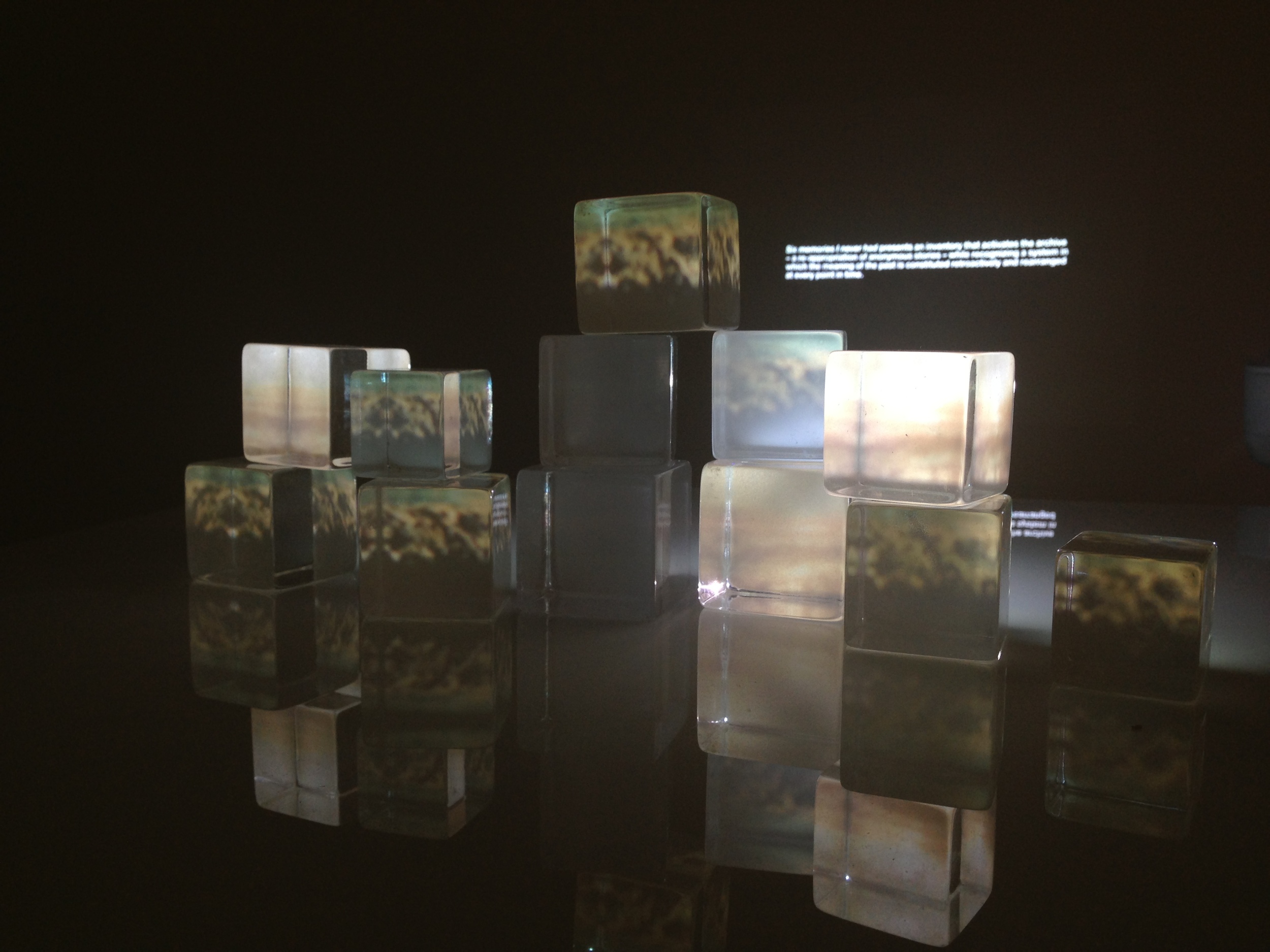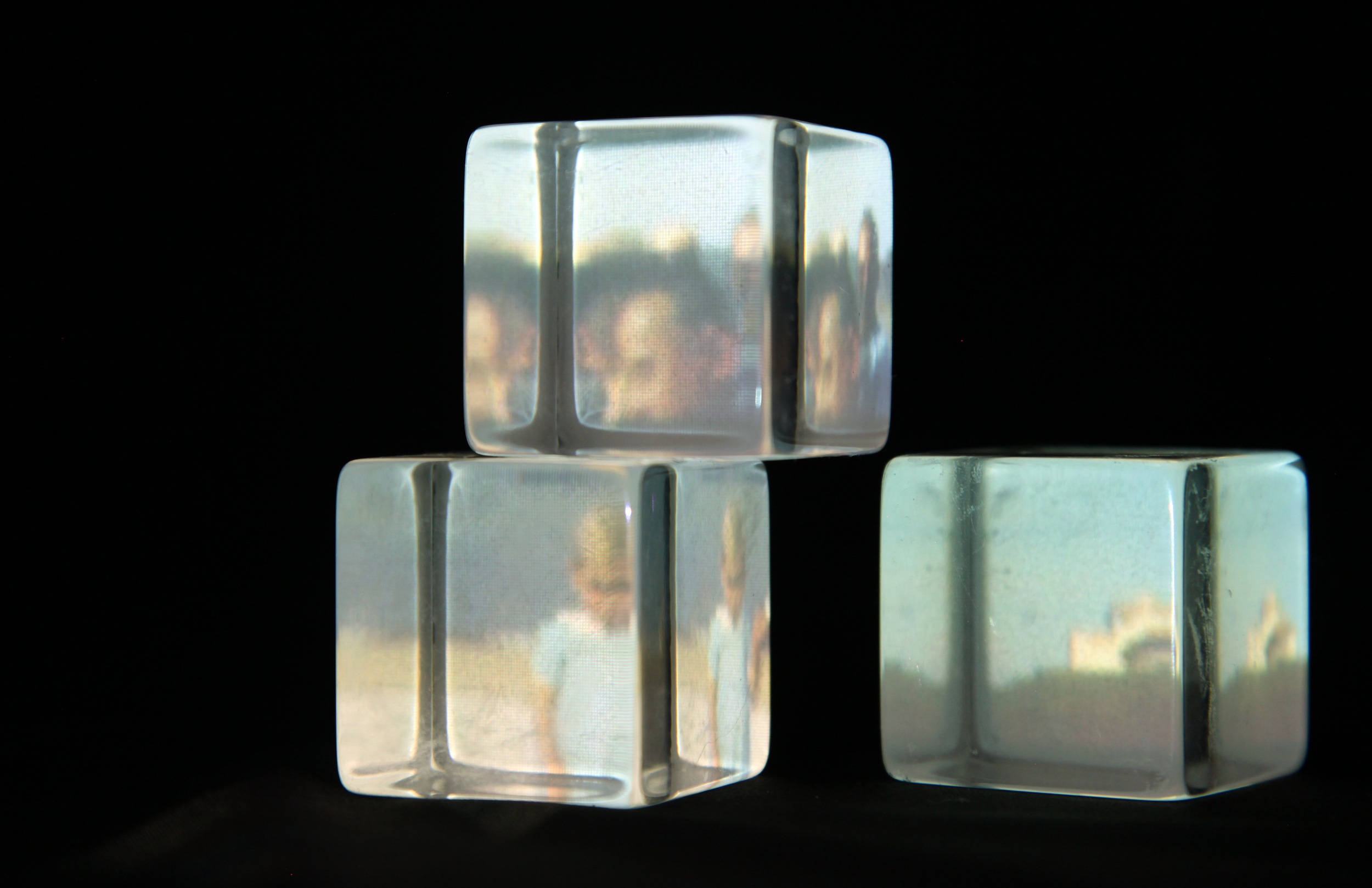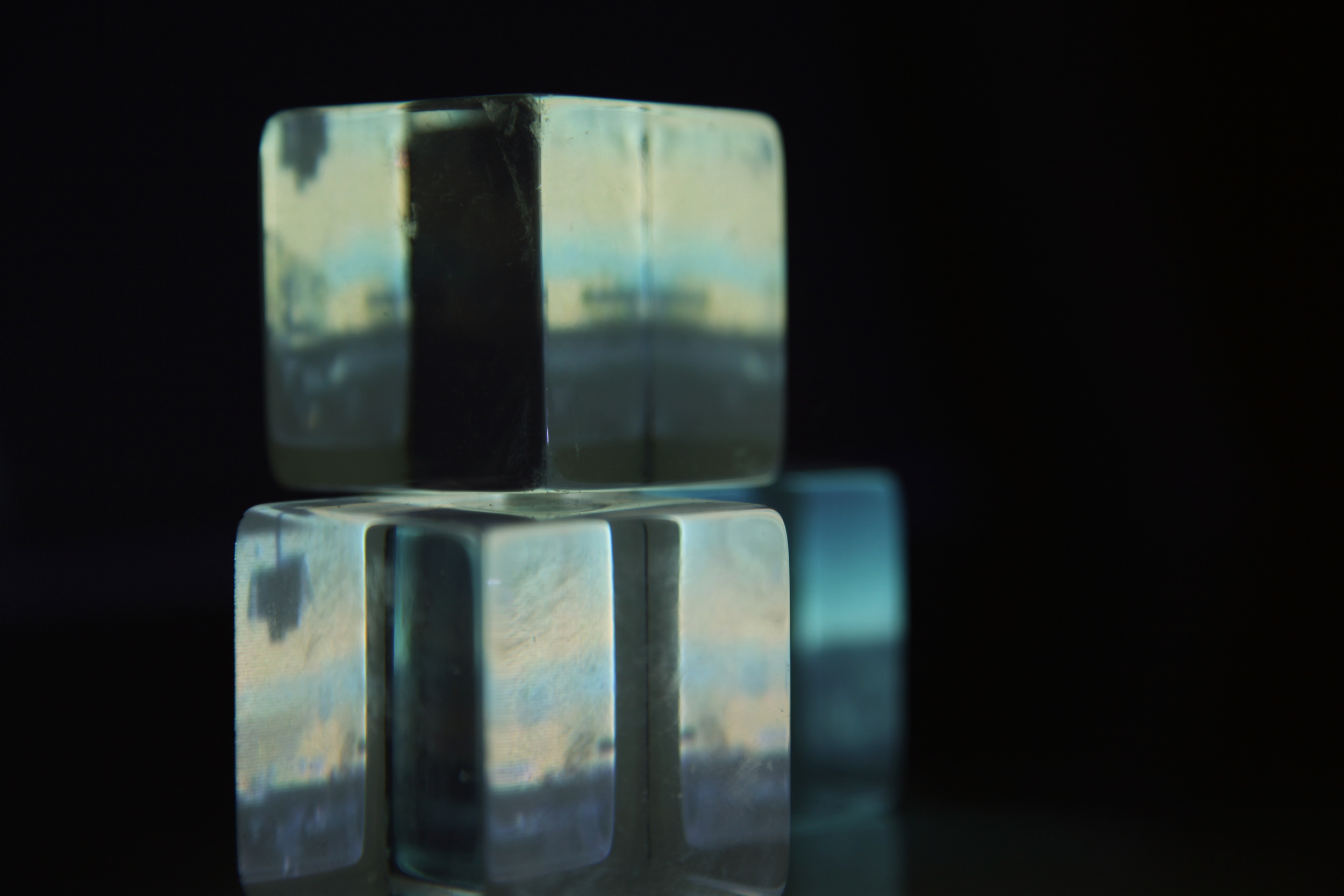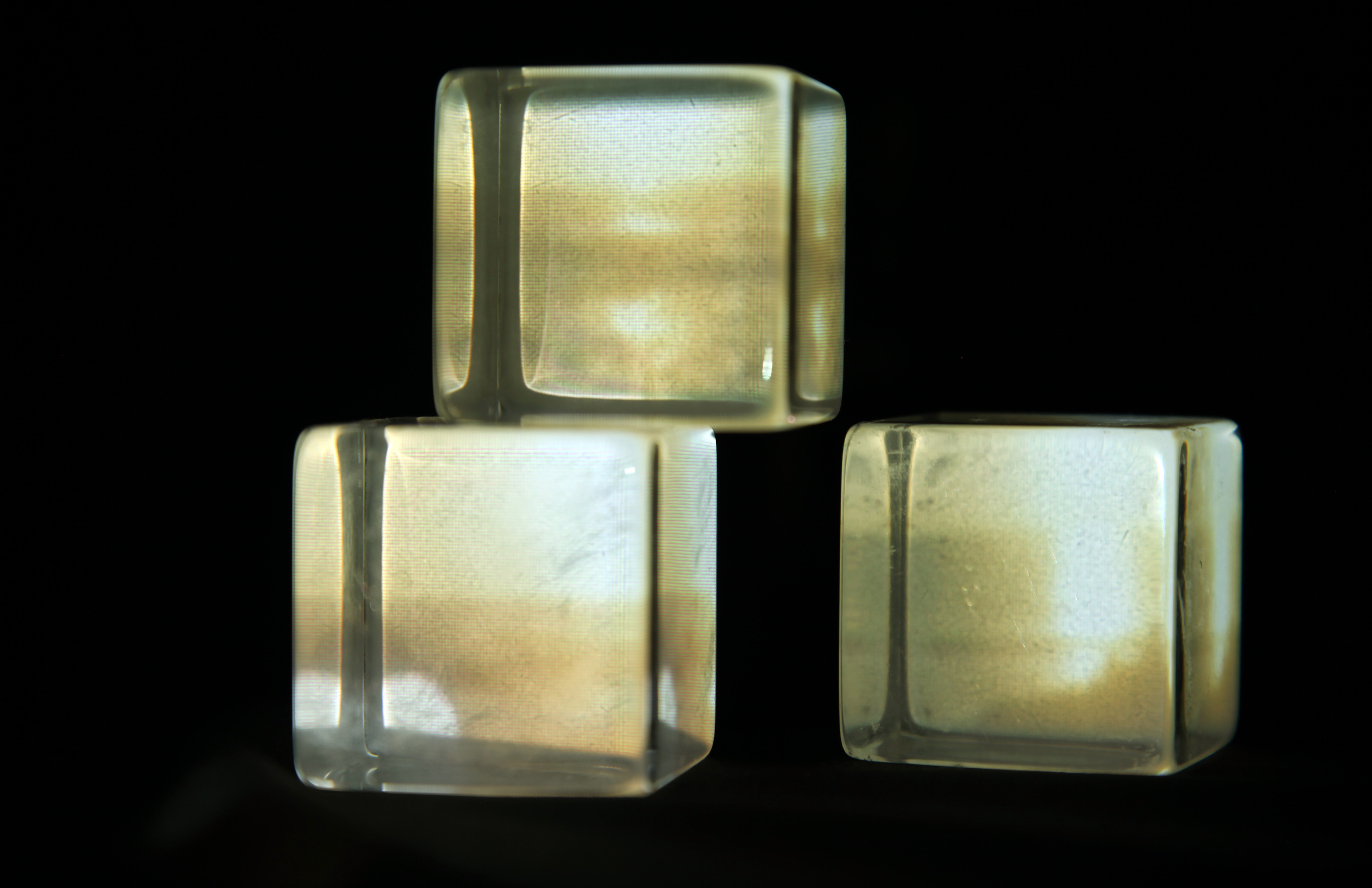2013 - Ongoing | Video Sculpture: Projection Mapping on plexi-glass cube, found footage | Variable dimensions
Time always entails a loss; as time passes by, something is constantly being left behind, and there is mourning, as well as a need to grasp what lingers. Images create the illusion that present and past co-exist. We then decide to collect the portrait of everything we wish to remember or do not wish to forget. Images become our memory.
For years now, I have been collecting super8 and 8mm films, creating my own archive of home movies and found footage. I buy these films in flea markets in different countries and have collected some from friends or in other random circumstances. Even though these movies and memories belonged to someone else, they somehow speak to my own.
I believe that images reveal the hidden processes by which humanity leaves the traces of its existence and that every picture becomes a fragment of an irretrievable past. The archive appears then as a potentially successful means of accessing what has been lost, reconstructing the past, putting together all these fragments through methods of order and categorization to be display as relics. But those methods of order and structure, recollection and repetition, may become system of passive latency, rather tan a dimension of active remembering.
Unsolicited Memories; Archival Exercises is an ongoing research and exploration of methods to physically represent this archive of memories as an embodied experience. I propose an inventory that activates the archive – a re-appropriation of anonymous stories – while recognizing a system in which the function of the past is not determined by its status as unequivocal event, but where its meaning is rather constituted retroactively and rearranged at every point in time.
In the functioning of remembering the value of the past is not that of truth but of desire and driven by desire, memory allows for both preservation and erasure.
In this video installation new narratives emerge from the juxtaposition and montage of found super8 home movies projected and mapped onto transparent plexi-glass cubes that have been randomly stacked and that seem to contain the images. Each cube, being simultaneously autonomous and part of a larger whole, turns on and off with no discernable pattern, just as memories can be triggered randomly by people, events and happenstance in life. In this way memory and the archive are deconstructed and re-articulated, both preserving and erasing the past, acting as memory objects that can be manipulated to facilitate new versions of the past.
